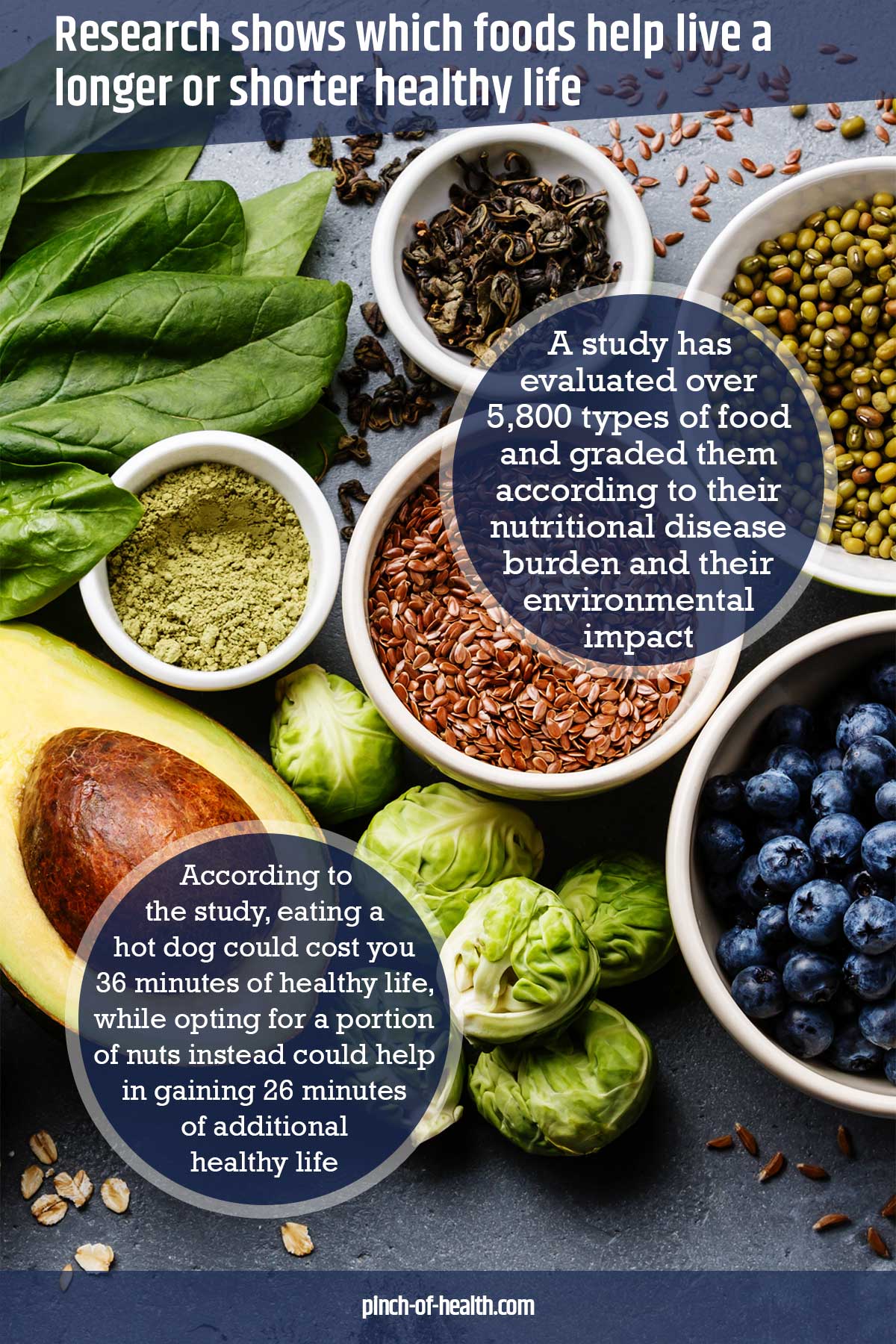A study has evaluated over 5,800 types of food and graded them according to their nutritional disease burden and their environmental impact.
It discovered that replacing 10% of caloric intake every day from processed meats and beef for a mix of vegetables, fruits, nuts, legumes and certain types of seafood can result in 48 minutes of healthy minutes gained each day and dietary carbon footprint reduced by a third.1✅ JOURNAL REFERENCE
DOI: 10.1038/s43016-021-00343-4
According to the study, eating a hot dog could cost you 36 minutes of healthy life, while opting for a portion of nuts instead could help in gaining 26 minutes of additional healthy life. Besides hot dogs, corned beef could cost you 71 minutes of healthy life, and a portion of 3 fried chicken wings 3.3 minutes.
On the other hand, foods that could lengthen your life included baked salmon which could add 15 minutes of healthy life, and tomato-based sauce sardines could add 82 minutes.
An epidemiology-based nutritional index was developed by the researchers for calculating in minutes of healthy life the beneficial or harmful health burden related to a helping of food eaten.
The index is adapted from the Global Burden of Disease where disease morbidity and mortality are related to a person’s single food choice. For their nutritional index, the researchers combined 15 dietary risk factors and estimates of disease burden from the Global Burden of Disease with the nutrition profiles of all foods eaten in the US. Healthy minutes of life are added with positive score foods, while foods that can be harmful to human health give negative scores.
The researchers made use of IMPACT World+ for evaluating the environmental impact of foods, a technique used for assessing the life cycle impact of foods (processing, production, preparation/cooking, manufacturing, waste, consumption), and added assessment improvements for water usage and damages to human health from the formation of fine particulate matter. Scores were developed for 18 environmental indicators that considered detailed food recipes in addition to the anticipated waste of food.
Foods were then grouped into 3 color zones based on their combined environmental and nutritional performances: green, yellow, and red. The green zone represents types of food recommended for consumption increase and includes foods that are nutritionally beneficial as well as having a low environmental impact. Green zone foods are mostly fruits, nuts, field-grown vegetables, whole grains, legumes, and certain types of seafood.
Types of food that have either a significant nutritional or environmental impact were included in the red zone, and consumption should be either reduced or avoided. Processed meats were the main nutritional impact foods, and lamb, pork, beef, and processed meats were the main environmental impact foods.



